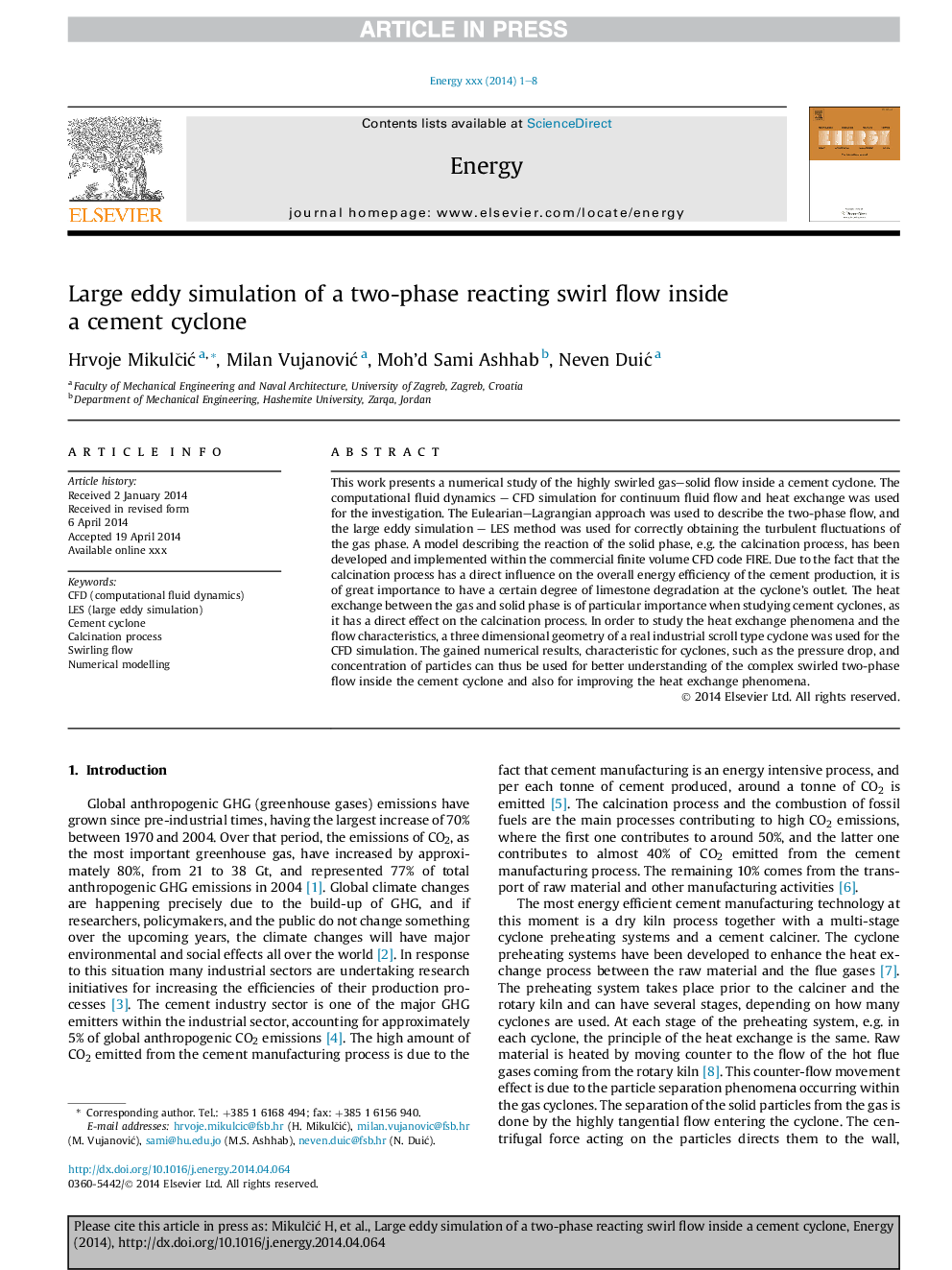| Article ID | Journal | Published Year | Pages | File Type |
|---|---|---|---|---|
| 8076719 | Energy | 2014 | 8 Pages |
Abstract
This work presents a numerical study of the highly swirled gas-solid flow inside a cement cyclone. The computational fluid dynamics - CFD simulation for continuum fluid flow and heat exchange was used for the investigation. The Eulearian-Lagrangian approach was used to describe the two-phase flow, and the large eddy simulation - LES method was used for correctly obtaining the turbulent fluctuations of the gas phase. A model describing the reaction of the solid phase, e.g. the calcination process, has been developed and implemented within the commercial finite volume CFD code FIRE. Due to the fact that the calcination process has a direct influence on the overall energy efficiency of the cement production, it is of great importance to have a certain degree of limestone degradation at the cyclone's outlet. The heat exchange between the gas and solid phase is of particular importance when studying cement cyclones, as it has a direct effect on the calcination process. In order to study the heat exchange phenomena and the flow characteristics, a three dimensional geometry of a real industrial scroll type cyclone was used for the CFD simulation. The gained numerical results, characteristic for cyclones, such as the pressure drop, and concentration of particles can thus be used for better understanding of the complex swirled two-phase flow inside the cement cyclone and also for improving the heat exchange phenomena.
Related Topics
Physical Sciences and Engineering
Energy
Energy (General)
Authors
Hrvoje MikulÄiÄ, Milan VujanoviÄ, Moh'd Sami Ashhab, Neven DuiÄ,
